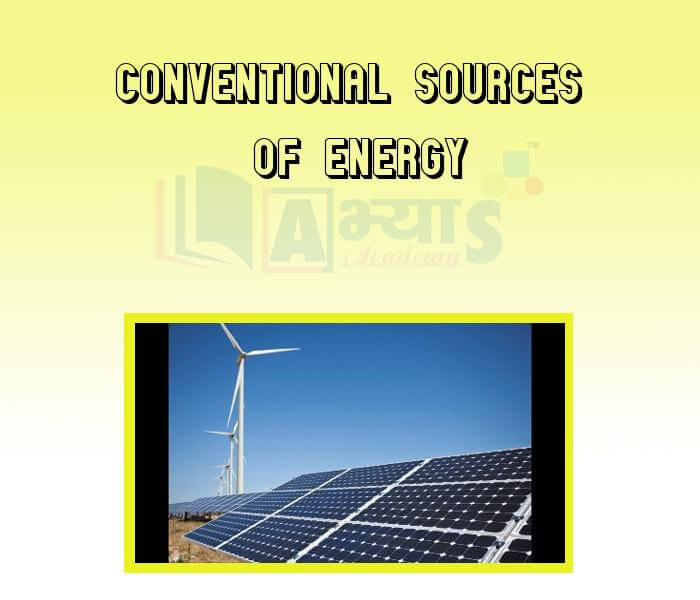Conventional Sources of Energy













Conventional Sources of Energy
Conventional Sources of Energy: Prominent conventional sources of energy are
1. Coal: India is highly dependent on coal for meeting its commercial energy requirements. Coal is a raw materialrial for heavy industries and thermal power stations. It is bulky due to which these industries are located near coalfields.Coal mining in India started at Raniganj in West Bengal in 1774. Depending on the degrees of compression, the depth and time of burial during its formation, there are following varieties of coal:
2. Petroleum: Petroleum is also known as mineral oil. It is the second highest energy source (after refining into various products like furnace oil, diesel, petrol, kerosene, etc) used in India after coal. Petroleum is known as ‘liquid gold’. First oil field in India was discovered at Makun (in Assam) in 1867. Petroleum refineries act as a ‘nodal industry’ for synthetic textile, fertiliser and chemical industries. The total oil refineries in India are seventeen in number. Out of which 14 refineries are in public sector, 2 are in private sector and one in joint sector.
3.Natural Gas: Natural gas is a clean energy resource. It is usually found along with petroleum, but sometimes separately also. Compared to coal and petroleum products, it burns with a very low emission of harmful gases and other pollutants. It provides energy for running of petrochemical industry besides being used as fuel for cooking and automobiles. The offshore region of the Krishna— Godavari basin has the largest amount of natural gas currently available in India. To fulfill its natural gas needs, India imports some gas and feeds it to various industries through pipelines. The 1700 km long Hazira-Vijaipur- Jagdishpur (HVJ) pipeline links Mumbai High and Bassin with the fertiliser, power and industrial complexes in Western and Northern India. Natural gas is mainly used by the fertiliser and power industries. Use of Compressed Natural Gas (CNG) for vehicles to replace liquid fuel is gaining wide popularity in the country.
4. Electricity: Electricity has a wide range of applications in today’s world. That’s why its Per Capita Consumption is considered as a sign of development. There are two ways through which electricity is generated. These are
The total oil refineries in India are seventeen in number. Out of which ___________________________ | |||
| Right Option : C | |||
| View Explanation | |||
The leading producer of coal in India is _______________ | |||
| Right Option : A | |||
| View Explanation | |||
Choose the correct order of arrangements: the types of coal according to its quality/carbon content: | |||
| Right Option : A | |||
| View Explanation |
Students / Parents Reviews [10]
Abhyas Methodology is very good. It is based on according to student and each child manages accordingly to its properly. Methodology has improved the abilities of students to shine them in future.

Manish Kumar
10thI have spent a wonderful time in Abhyas academy. It has made my reasoning more apt, English more stronger and Maths an interesting subject for me. It has given me a habbit of self studying

Yatharthi Sharma
10thAbhyas is a complete education Institute. Here extreme care is taken by teacher with the help of regular exam. Extra classes also conducted by the institute, if the student is weak.

Om Umang
10thIt was a good experience with Abhyas Academy. I even faced problems in starting but slowly and steadily overcomed. Especially reasoning classes helped me a lot.

Cheshta
10thMy experience with Abhyas is very good. I have learnt many things here like vedic maths and reasoning also. Teachers here first take our doubts and then there are assignments to verify our weak points.

Shivam Rana
7thA marvelous experience with Abhyas. I am glad to share that my ward has achieved more than enough at the Ambala ABHYAS centre. Years have passed on and more and more he has gained. May the centre flourish and develop day by day by the grace of God.

Archit Segal
7thAbout Abhyas metholodology the teachers are very nice and hardworking toward students.The Centre Head Mrs Anu Sethi is also a brilliant teacher.Abhyas has taught me how to overcome problems and has always taken my doubts and suppoeted me.

Shreya Shrivastava
8thMy experience with Abhyas academy is very good. I did not think that my every subject coming here will be so strong. The main thing is that the online tests had made me learn here more things.

Hiya Gupta
8thIt has a great methodology. Students here can get analysis to their test quickly.We can learn easily through PPTs and the testing methods are good. We know that where we have to practice

Barkha Arora
10thIt was good as the experience because as we had come here we had been improved in a such envirnment created here.Extra is taught which is beneficial for future.
